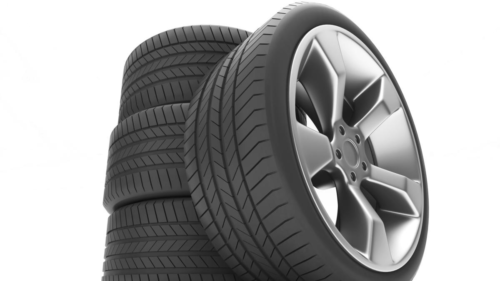Best and worst years for the Toyota 4Runner
Toyota is known for its durable and dependable cars, and the 4Runner lives up to the hype. Since its inception, the 4Runner has had a long and well-reviewed impact on Toyota’s SUV lineup.
But, like any vehicle, owners can experience the same common problems. In fact, certain generations of 4Runners have serious issues that could affect their lifespan and overall performance. Today, we’ll take a closer look at the Toyota 4Runner and its best and worst years.
Toyota 4Runner Overview
Toyota introduced the first 4Runner in 1984. Originally little more than a converted short-bed pickup, it has evolved over the years to become one of the most popular SUVs on the market.
There have been five generations of 4Runners. The fifth launched in 2009 and received a modern facelift in 2013.
Toyota 4Runner Reliability
Aside from a few poorly designed models over the years, the 4Runner is one of the most consistent SUVs on the market.
In fact, since its first production run in the 1980s, it has garnered praise for its build quality and reliability.
Its body-on-frame approach gives it excellent stability, solid construction and robustness. Owners have also often praised the durability of the 4.0L V6 engine.
Unsurprisingly, the 4Runner can be driven for decades and hundreds of thousands of miles, giving the model a reputation for being a worthwhile investment in the long run.
Toyota 4Runner Life Expectancy
Thanks to its reliability and impressive engine, you can drive a Toyota 4Runner for decades. You’ll find countless owner stories with over 200,000 miles on their 4Runners. By taking care of your vehicle and getting regular checkups, you might even be able to join the 300,000-mile club.
The one exception to the impressive longevity of the 4Runner is the fourth generation from 2003 to 2009. This model is prone to corrosion, which could lead to dangerous problems with the vehicle.
Common problems with Toyota 4Runner
No matter how well designed or built, all cars eventually experience some problems. Over the years these have been the most common bugbear owners encountered with their Toyota 4Runners.
Structural and Corrosion
Rust and corrosion are major concerns for almost all Toyota 4Runner owners. You’ll find plenty of complaints about rust and corrosion on the 4Runner’s frame and bottom.
Corrosion is usually premature. It also speeds up, making the vehicle run down and potentially dangerous to drive.
Owners who live in snowy or rainy climates have been urged to regularly clean and maintain their 4Runners to prevent corrosion. Salty roads can also accelerate corrosion.
Unfortunately, corrosion is common on all 4Runner model years, but 2003-2009 models are known to be the most susceptible.
Related to airbags
A faulty airbag is more than just a nuisance. It is life threatening. Users reported that some 4Runners did not deploy the airbag during a crash. That malfunction caused the owners to suffer neck injuries, puncture wounds, and fractures.
Other owners have reported that the airbag light will not turn off. If the airbag light is on while driving, your airbag may be disabled or there is a malfunctioning sensor in the vehicle.
Melted and cracked dashboards
Toyota has had problems with melted and cracked dashboards on several models. With the 4Runner, excessive heat and sunlight have caused the boards to melt or crack. You may notice at first that your dashboard is sticky if you have this problem.
The company has not authorized a recall to remedy the problem. Instead, it featured an enhanced 10-year warranty replacement for melted boards, which runs through the original sale purchase date.
Brake system problems
Other complaints have been related to the braking system:
Brake rotors and pads wear out prematurely.
Calipers need replacement too often.
The anti-lock brake function is not working properly.
Brake rotors cause severe vibrations in the vehicle.
Toyota 4Runner Years to Avoid
The above problems are common to almost all model year. However, some Toyota 4Runners had more problems than others and are best avoided.
2003-2009 Fourth Generation 4Runner
The fourth generation Toyota 4Runner runs from the years 2003 to 2009. During this period, the vehicle received new bodywork and chassis changes. Unfortunately, the redesign introduced or exacerbated several shortcomings for the brand.
Corrosion is the biggest challenge for fourth-generation 4Runners. Owners complained that the frame completely rusted away, while excessive rust plagued the undercarriage as well.
Additionally, this model year has experienced melting dashboards and brake system issues.
2001-2002 Third Generation 4 Runner
Frame corrosion and rust associated with 4Runners began with the 2001-2002 model year. Owners noted that the frame, bumpers, and undercarriage were prone to rust.
Other problems were noted with the suspension, transmission, and engine.
1990-1995 second generation 4Runner
SUVs of the ’80s and ’90s weren’t known for their stellar safety ratings. In that context, it’s no surprise to learn that the second-generation 4Runner received a one-star frontal crash rating from NHTSA. Rollovers were common in many SUVs, and the 4Runner was no exception.
Elsewhere, the model had bad head gaskets, instances of rust, and sagging suspension.
1988-1989 first generation 4Runner
While considered a classic, older first-generation 4Runners are best avoided. Corrosion, worn parks, leaks and other common challenges of old persist in the first-generation 4Runner.
Still, this generation can be dependable, and models in excellent condition have been known to fetch premium prices.
Best years for Toyota 4Runner
While the 4Runner had some growing pains, it has given the auto industry some great models. Below are the best model years for the 4Runner if you’re looking for a used SUV on the market.
2017 fifth generation 4Runner
The 2017 4Runner fixed many of the issues found in older models. Newer models are less prone to corrosion, but they are not tested for extended periods.
The airbag recall has been the only major concern for the fifth-generation model. It affected 67 million vehicles from 24 car manufacturers.
2008-2009 Fourth Generation 4Runner
Toyota’s fourth-generation 4Runner is the only model to offer a V8 engine, making it ideal for owners who need extra towing capacity and power. The V8 is Toyota’s legendary 2UZ engine, also found in its line of Lexus vehicles.
For 2008, the fourth generation received a modernized facelift, and corrosion was much less common.
You’ll find countless reviews praising how the 2008-2009 generation is the best and most reliable of the 4Runner name.
1999-2000 3rd generation 4Runner
The third-generation 4Runner underwent numerous changes. Toyota redesigned the interior and improved the vehicle’s exterior styling. 1999 also introduced an improved four-wheel drive system that made wet or snowy climates safer.
While the 1999-2000 4Runner doesn’t experience noticeable rust, corrosion still plagues this generation. In addition, it can be difficult to find a third generation without corrosion due to its age.
1994-1995 second generation 4Runner
The 1994 4Runner significantly improved SUV safety standards by adding side impact beams and driver and passenger airbags.
During this period, the 4Runner was a popular vehicle due to its reliability and durability. Many reviews even claimed that the 4Runner had to be practically “bulletproof” thanks to its sturdy frame. As with the subsequent third generation, Toyota paid special attention to the overall styling and comfort of the vehicle.
While it lacks the more luxurious features of later versions, the 4Runner represents a huge leap forward and is highly sought after. In fact, you can get a premium like a used car.
Should you buy a Toyota 4Runner?
So now that you know the lowdown on the 4Runner, are you planning to buy a new or used model? The most used 4Runners are certainly a worthwhile purchase, as the name is one of the most trusted in the Toyota lineup.
Barring a few bad years, the 4Runner has consistently performed thanks to its build quality and strong performance. Each generation has been noted for overall reliability, consistent off-road performance, and ample space. That reputation has led to the store having a high resale value. Therefore, a bargain can be hard to come by.



